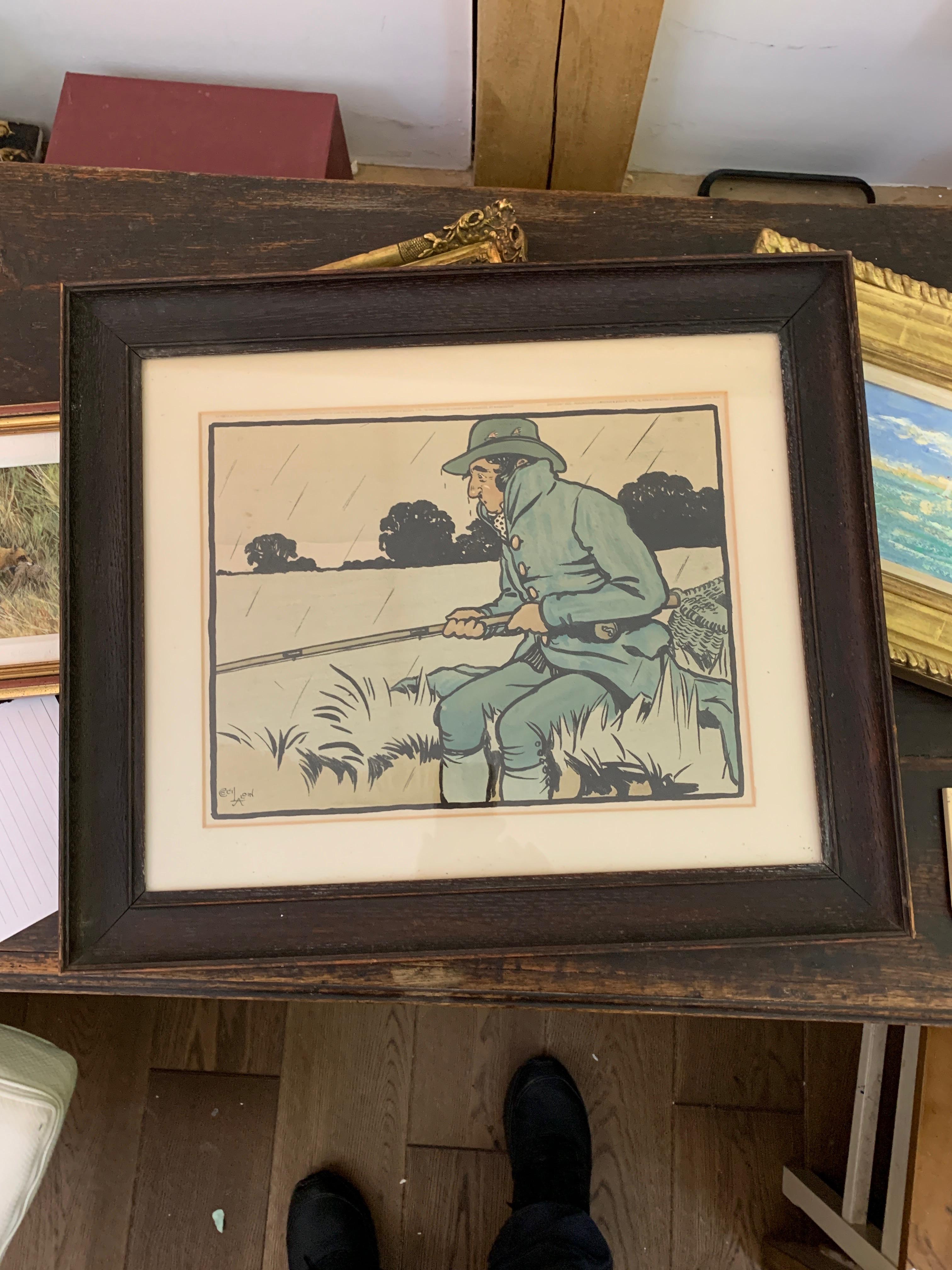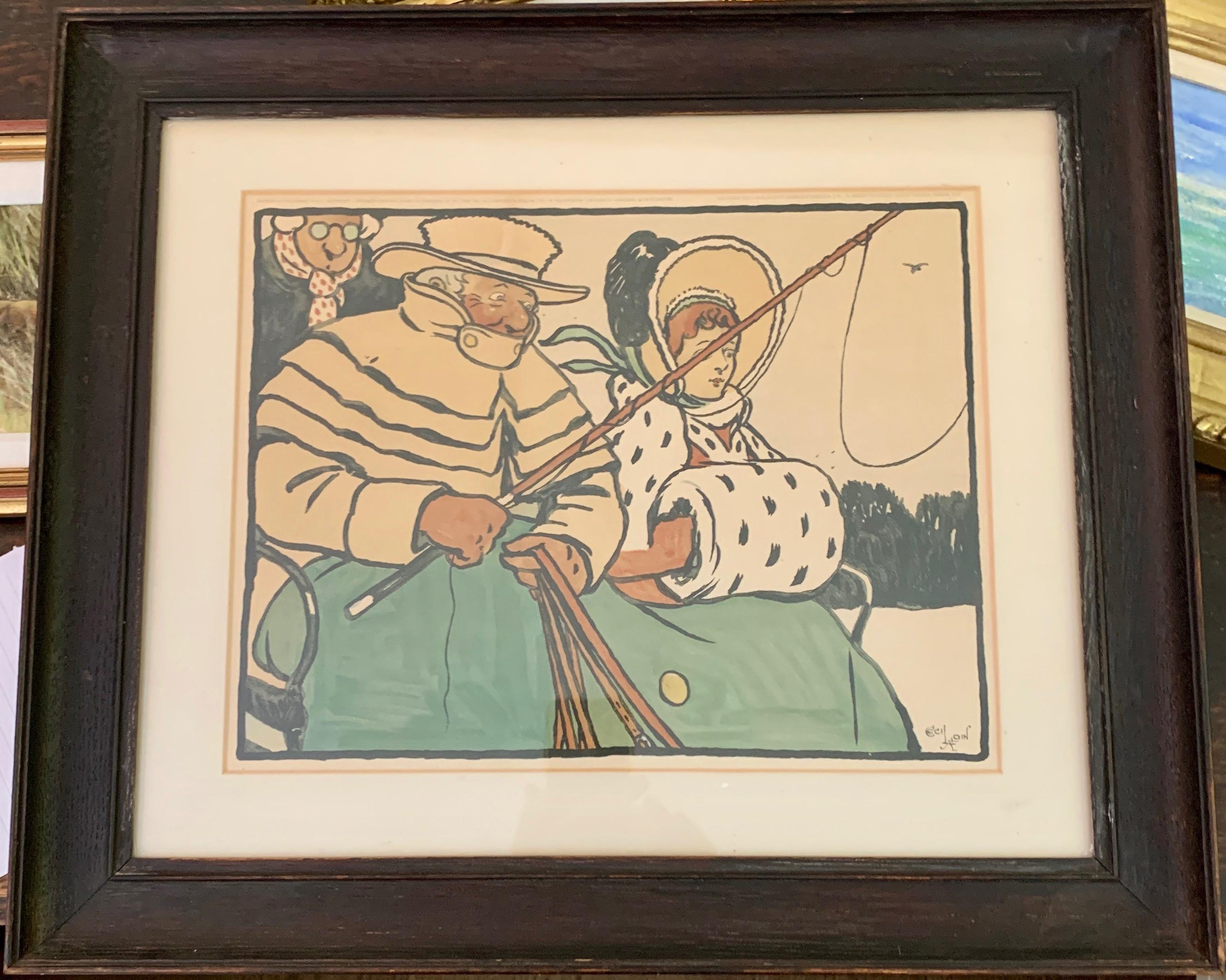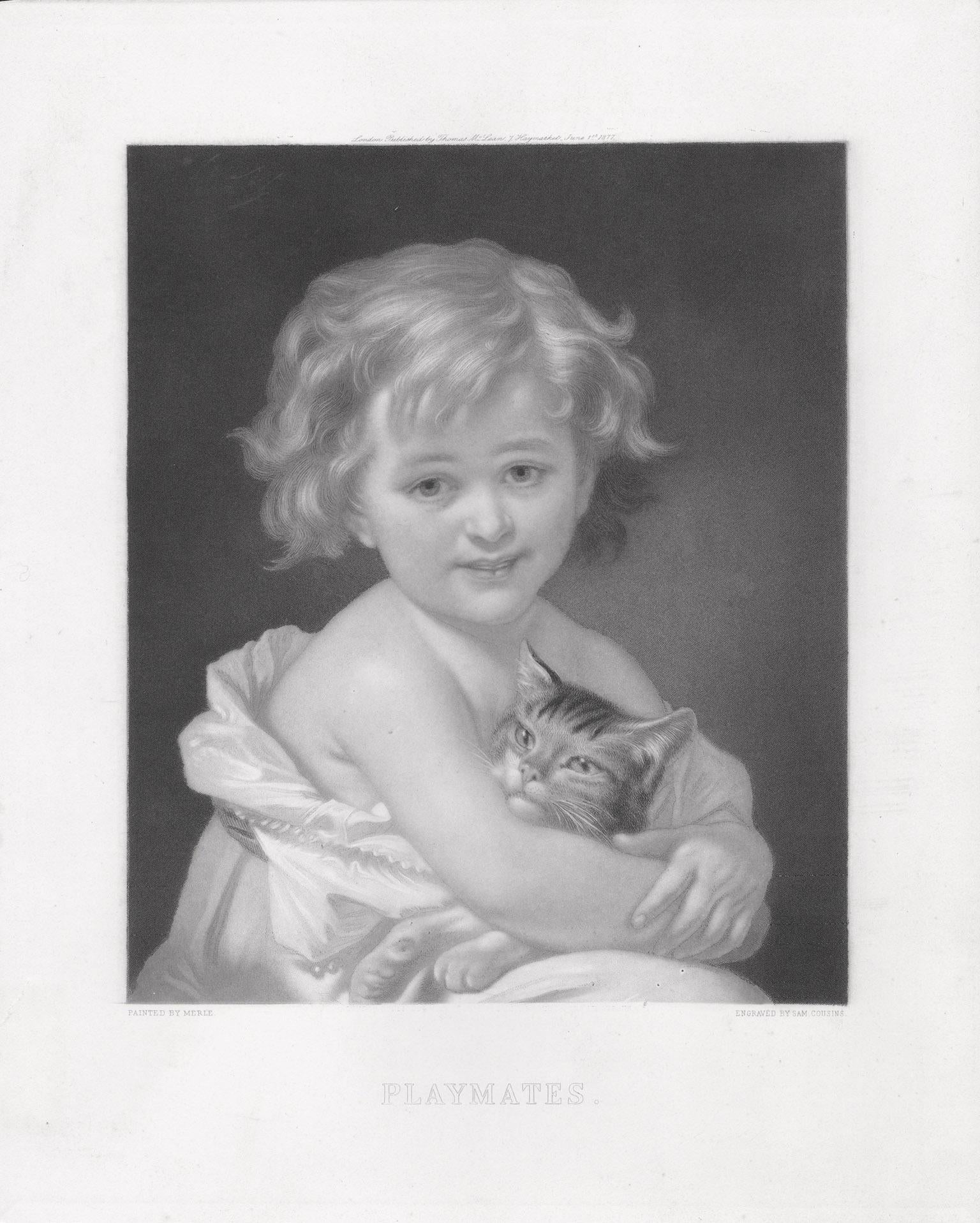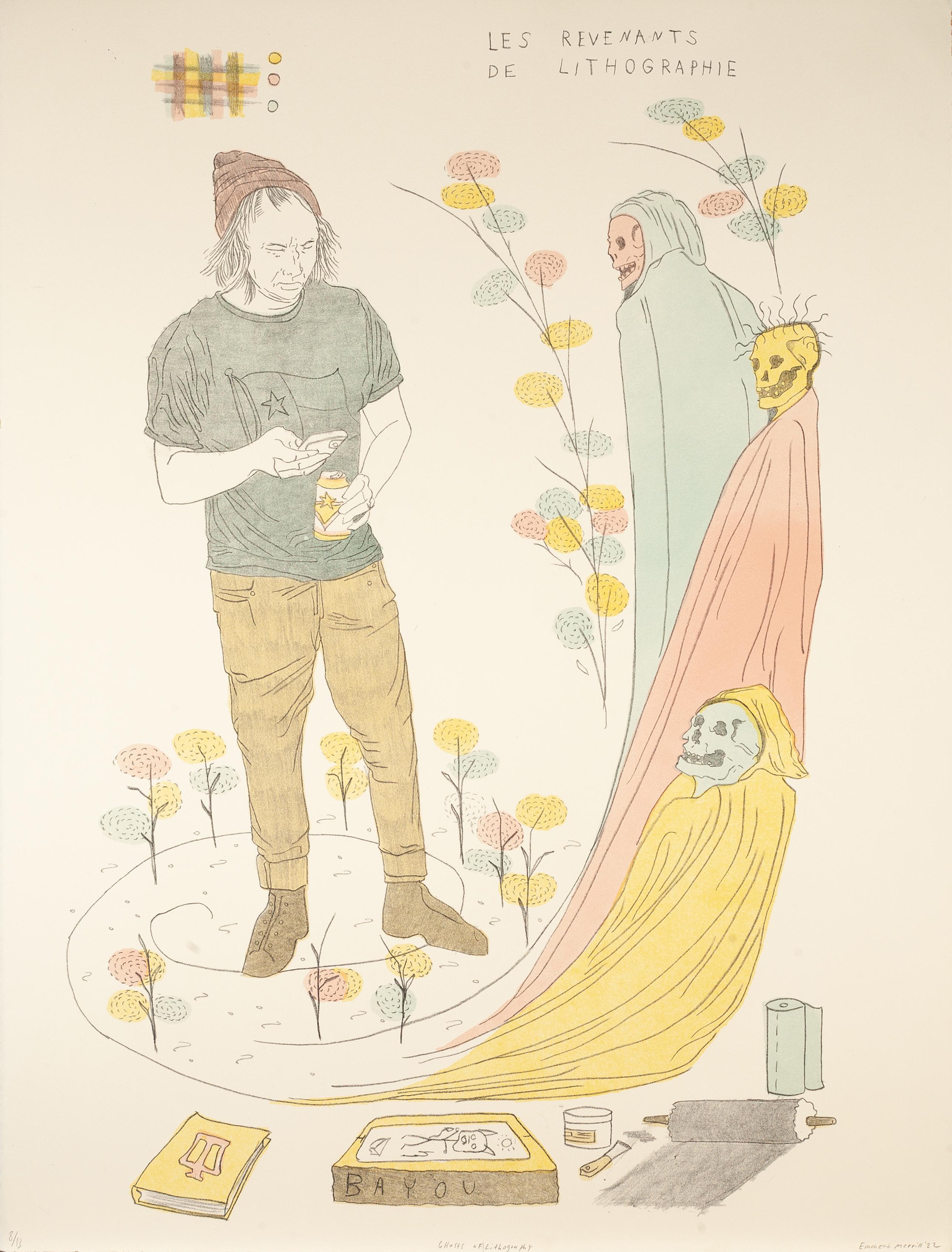Items Similar to English Victorian 19th Horse Racing scene with Jockeys
Want more images or videos?
Request additional images or videos from the seller
1 of 7
Cecil Charles Windsor Aldin, R.B.A.English Victorian 19th Horse Racing scene with Jockeys1906
1906
About the Item
Cecil Charles Windsor Aldin, was a British artist and illustrator best known for his paintings and sketches of animals, sports, and rural life. Aldin executed village scenes and rural buildings in chalk, pencil and also wash sketching.
this is an outstanding example of the artists lithographic work. The colours in the piece are exellent for the age and it is still framed in its original frame.
- Creator:
- Creation Year:1906
- Dimensions:Height: 12 in (30.48 cm)Width: 16 in (40.64 cm)Depth: 2 in (5.08 cm)
- Medium:
- Movement & Style:
- Period:
- Condition:The lithograph is in its original English oak frame and is in good ready to hang order.
- Gallery Location:Woodbury, CT
- Reference Number:1stDibs: LU50734359251
About the Seller
5.0
Platinum Seller
These expertly vetted sellers are 1stDibs' most experienced sellers and are rated highest by our customers.
Established in 1983
1stDibs seller since 2016
405 sales on 1stDibs
Typical response time: <1 hour
- ShippingRetrieving quote...Ships From: Reigate, United Kingdom
- Return PolicyA return for this item may be initiated within 7 days of delivery.
More From This SellerView All
- English Victorian 19th Fisherman, seated by the riversideBy Cecil Charles Windsor Aldin, R.B.A.Located in Woodbury, CTCecil Charles Windsor Aldin, was a British artist and illustrator best known for his paintings and sketches of animals, sports, and rural life. Aldin executed village scenes and rura...Category
Early 1900s Victorian Figurative Prints
MaterialsLithograph
- English Victorian 19th century people on a stage coachBy Cecil Charles Windsor Aldin, R.B.A.Located in Woodbury, CTCecil Charles Windsor Aldin, was a British artist and illustrator best known for his paintings and sketches of animals, sports, and rural life. Aldin executed village scenes and rura...Category
Early 1900s Victorian Figurative Prints
MaterialsLithograph
- English victorian Gentlemen playing Crown BowlsBy Cecil Charles Windsor Aldin, R.B.A.Located in Woodbury, CTCecil Charles Windsor Aldin, was a British artist and illustrator best known for his paintings and sketches of animals, sports, and rural life. Aldin executed village scenes and rura...Category
Early 1900s Victorian Figurative Prints
MaterialsHandmade Paper, Lithograph
- English early 20th century, An Irish Hare and a Mountain hare in a landscapeBy Archibald ThorburnLocated in Woodbury, CTWonderful Vintage Archibald Thorburn colored chromolithograph. The colors are amazing, giving the painting a really great appearance . Printed circa 1919, the picture is inscribed ...Category
1910s Victorian Animal Prints
MaterialsPaper
- English early 20th century, A Common Hare in a landscapeBy Archibald ThorburnLocated in Woodbury, CTWonderful Vintage Archibald Thorburn colored chromolithograph. The colors are amazing, giving the painting a really great appearance . Printed circa 1919, the picture is inscribed ...Category
1910s Victorian Animal Prints
MaterialsPaper
- 19th century English Harvest landscape with horses, farmers, children, familyLocated in Woodbury, CTHenry Brittian Willis English plough team at rest during harvest Summertime. A painting by Henry Brittiam Willis capturing a 19th-century English plough team, complete with horses,...Category
1850s Victorian Landscape Paintings
MaterialsCanvas, Oil
You May Also Like
- Playmates, mezzotint of child and cat by Cousins after Hugues MerleBy Samuel CousinsLocated in Melbourne, VictoriaHugues Merle was a French painter who mostly depicted sentimental or moral subjects. Samuel Cousins was a highly regarded mezzotint engraver. 350mm by 2...Category
Late 19th Century Victorian Figurative Prints
MaterialsMezzotint
- Christmas Lithograph Poster After James Thurber "God Rest Ye Merry Gentlemen"Located in Alamo, CAThis is a rare Franklin Simon Department store Christmas lithographic poster with an image after a James Thurber cartoon drawing of a man in a chair with...Category
Mid-20th Century Minimalist Figurative Prints
MaterialsLithograph
- Ghosts of LithographyLocated in Columbia, MOGhosts of Lithography 2022 Lithograph on BFK 24 x 18.25Category
21st Century and Contemporary Contemporary Figurative Prints
MaterialsLithograph
- Marc Chagall - Couple With a Goat - Original LithographBy Marc ChagallLocated in Collonge Bellerive, Geneve, CHMarc Chagall Original Lithograph Title: Couple With a Goat 1970 Dimensions: 32 x 24 cm From the art revue XXè siècle Reference: Mourlot #608 Unsigned and unumbered as issuedCategory
Mid-20th Century Surrealist Figurative Prints
MaterialsLithograph
- Anubis Mythology God Lithograph Framed Dog Lady Harp In StockBy Michael ParkesLocated in Utrecht, NLAnubis Mythology God Lithograph Framed Dog Lady Harp In Stock - Edition 12/160 Michael Parkes (1944) studied graphic art and painting at the University of K...Category
21st Century and Contemporary Contemporary Animal Prints
MaterialsLithograph
- After Georges Braque - Antiborée - LithographLocated in Collonge Bellerive, Geneve, CHLithograph after Georges Braque. Signed in the plate Edition of 150 Dimensions: 76 x 117 cm Bibliography: « Les Métamorphoses de Braque» of Heger de Loewenfeld and Raphaël de Cuttoli , Editions FAC, Paris, 1989. In 1961 Georges Braque decided with his laidary friend Heger de Loewenfeld to pick up certain of his works to in order to create artworks, this beautiful litograph is one of them. Héméra in the Mythology: In Greek mythology Hemera was the personification of day and one of the Greek primordial deities. She is the goddess of the daytime and, according to Hesiod, the daughter of Erebus and Nyx (the goddess of night). Hemera is remarked upon in Cicero's De Natura Deorum, where it is logically determined that Dies (Hemera) must be a god, if Uranus is a god. The poet Bacchylides states that Nyx and Chronos are the parents, but Hyginus in his preface to the Fabulae mentions Chaos as the mother/father and Nyx as her sister. She was the female counterpart of her brother and consort, Aether (Light), but neither of them figured actively in myth or cult. Hyginus lists their children as Uranus, Gaia, and Thalassa (the primordial sea goddess), while Hesiod only lists Thalassa as their child. The father of Cubism Three Cubist that distinguishes art historian periods were initiated and developed by Georges Braque: The Cubist Cézanne (1907-1909), Executive (1909-1912) and synthetic (1912-1922). Post-Impressionist and fawn, Braque no longer adheres to the contingency of a decorative way or the other. Cézanne’s paintings exhibited at the Grand Palais during the retrospective of 1907 are a revelation: Cézanne sought and invented a pictorial language. In his footsteps, Braque went to the South with the reasons of the Master. He returned with Estaque landscapes and surprising Ciotat it keeps Cezanne geometric model and retains the “passages” continuity from one surface to another to create the sensation of “turning around” of the object represented. But he wants to go after the consequences of the vision of Cezanne. In his paintings Houses in L’Estaque (1908) it simplifies the volumes of houses, neglects detail by removing doors and windows: the plastic rhythm that builds the table. Large Nude , a masterpiece of the period, can be considered the first work of Cézanne cubism . Systematizing and deepening Braque discoveries open the door analytical cubism. In 1909, his painting became more cerebral than sensual. The pattern is recreated in the two-dimensionality of the canvas, leaving aside any illusionistic perspective. In Still Life with Violin, objects are analyzed facets according to their characteristic elements, each facet referring to a particular view of the object. There are so many facets of points selected view: Table reflects the knowledge of the object and the ubiquity of the eye. Moreover, Braque is looking for the essence of the objects in the world rather than their contingency, which explains the absence of light source and use of muted colors (gray, ocher), contingent aspects of the object . But formal logic has stepped facets, erased any anecdote to the object and ultimately led to his painting a hermetic more marked on the edge of abstraction (see the series of Castle Roche-Guyon ). Braque, anxious to keep the concrete and refusing at all costs that the logic of Cubism takes the paintings to abstract, reintroduced signs of reality in his paintings in 1912 marks the beginning of Synthetic Cubism. Historians speak of “signs of real” rather than reality because what interests Braque, this is not to put reality into a table, but to create a painting which, by its language, refers to the real. To do this, he invented two major techniques XX th century inclusions and contributions. The inclusions consist of painting objects that have no real depth, materials (wallpaper in Nature morte aux playing cards faux wood is a pictorial inclusion) or letters (calligraphic inclusion in Portuguese ), made first brush and a few months later stencil. Contributions are defined in contrast with the collage on canvas of foreign materials: glued or sand paper, sawdust, etc.. Regarding the collages, Braque used for the first time in September 1912 a piece of adhesive paper imitating faux wood Compote...Category
1950s Cubist Animal Prints
MaterialsLithograph
Recently Viewed
View AllMore Ways To Browse
Victorian 19th
Antique Victorian Print
Antique Victorian Prints
English Horse
Victorian Horse
British Racing
Horse Jockey
Victorian Framed Print
Antique Racing
Jockeys And Horse
Framed Horse Lithograph
Antique Framed Victorian Prints
Antique Jockey
Antique Horse Lithograph
Antique Horse Racing
Horse Racing Antique
English Racing
Horse Painting 1900





